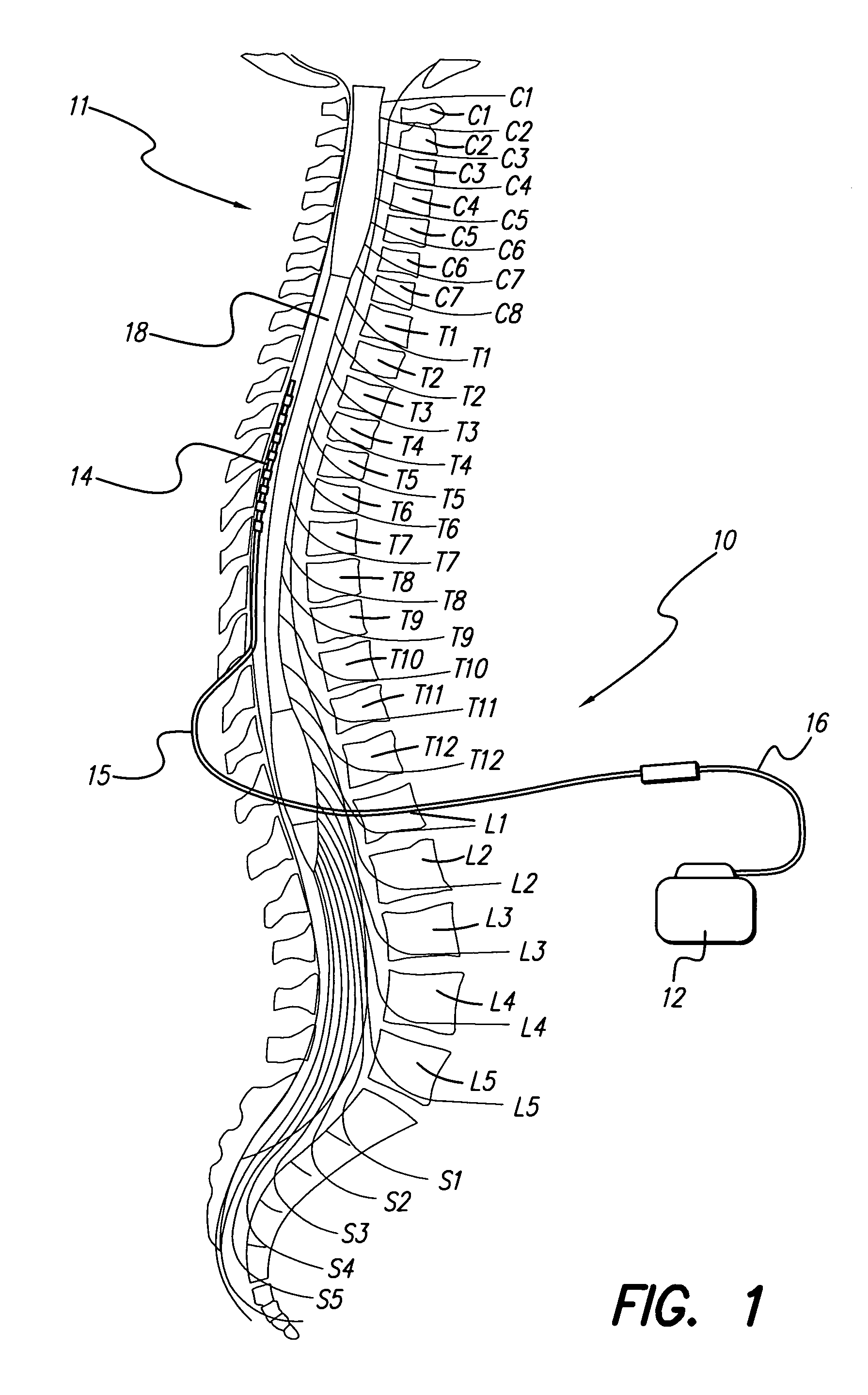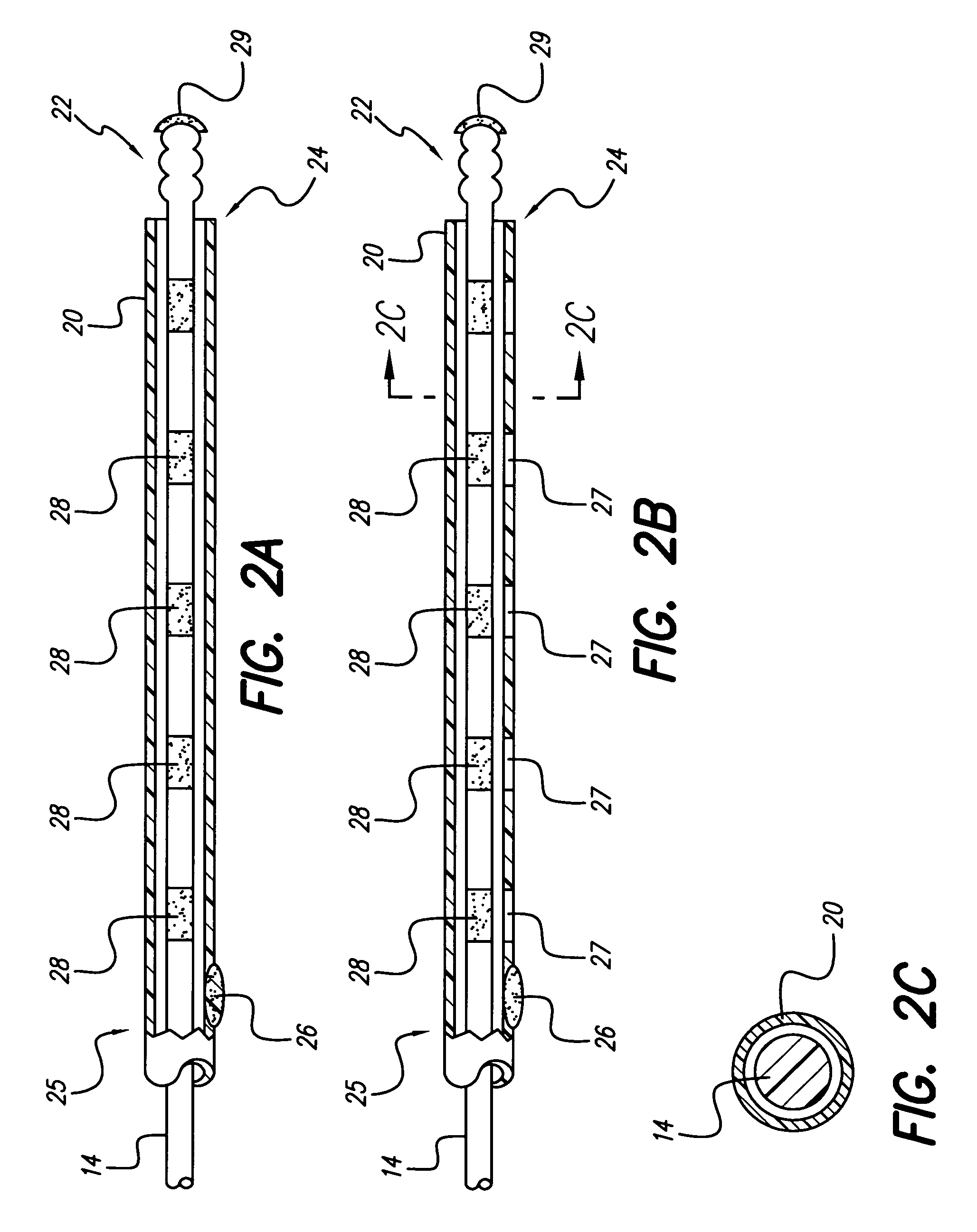System and method for lead fixation
a lead fixation and lead technology, applied in the field of medical stimulation systems, can solve the problems of scs system not being able to perform the intended function, scs system being less effective or even ineffective for its intended purpose, affecting treatment,
- Summary
- Abstract
- Description
- Claims
- Application Information
AI Technical Summary
Benefits of technology
Problems solved by technology
Method used
Image
Examples
Embodiment Construction
[0012]The present invention addresses the above and other needs by providing lead designs that permit improved fixation to the dura in a manner that also permits adequate flexibility to the lead to accommodate postural changes.
[0013]An electrode array of a lead is enclosed in a flexible tubing or sheath made of biocompatible material. The electrode array and sheath are inserted adjacent to the dura of the spine. The tip of the electrode array can be pitted, grooved or threaded in a manner that facilitates maturation of scar tissue over time near the electrode array tip. Scar maturation serves to fix the electrode array to the dura, thus minimizing lead migration. Nevertheless, the pitted, grooved, or threaded construction of the tip of the electrode array permits the lead to be easily explanted. A twisting action that applies rotational force or torque to the body of the lead during explantation can easily detach the grooved or threaded electrode array located at the distal tip of a...
PUM
 Login to View More
Login to View More Abstract
Description
Claims
Application Information
 Login to View More
Login to View More - R&D
- Intellectual Property
- Life Sciences
- Materials
- Tech Scout
- Unparalleled Data Quality
- Higher Quality Content
- 60% Fewer Hallucinations
Browse by: Latest US Patents, China's latest patents, Technical Efficacy Thesaurus, Application Domain, Technology Topic, Popular Technical Reports.
© 2025 PatSnap. All rights reserved.Legal|Privacy policy|Modern Slavery Act Transparency Statement|Sitemap|About US| Contact US: help@patsnap.com



